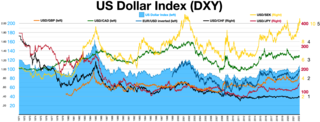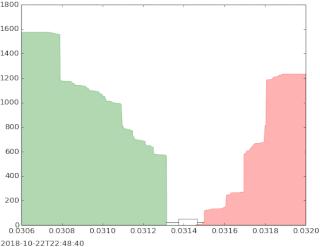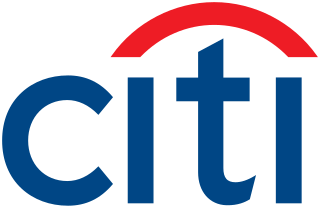Related Research Articles

Day trading is a form of speculation in securities in which a trader buys and sells a financial instrument within the same trading day, so that all positions are closed before the market closes for the trading day to avoid unmanageable risks and negative price gaps between one day's close and the next day's price at the open. Traders who trade in this capacity are generally classified as speculators. Day trading contrasts with the long-term trades underlying buy-and-hold and value investing strategies. Day trading may require fast trade execution, sometimes as fast as milli-seconds in scalping, therefore a direct-access day trading software is often needed.

The foreign exchange market is a global decentralized or over-the-counter (OTC) market for the trading of currencies. This market determines foreign exchange rates for every currency. It includes all aspects of buying, selling and exchanging currencies at current or determined prices. In terms of trading volume, it is by far the largest market in the world, followed by the credit market.
A currency future, also known as an FX future or a foreign exchange future, is a futures contract to exchange one currency for another at a specified date in the future at a price that is fixed on the purchase date; see Foreign exchange derivative. Typically, one of the currencies is the US dollar. The price of a future is then in terms of US dollars per unit of other currency. This can be different from the standard way of quoting in the spot foreign exchange markets. The trade unit of each contract is then a certain amount of other currency, for instance €125,000. Most contracts have physical delivery, so for those held at the end of the last trading day, actual payments are made in each currency. However, most contracts are closed out before that. Investors can close out the contract at any time prior to the contract's delivery date.

The bid–ask spread is the difference between the prices quoted for an immediate sale (ask) and an immediate purchase (bid) for stocks, futures contracts, options, or currency pairs in some auction scenario. The size of the bid–ask spread in a security is one measure of the liquidity of the market and of the size of the transaction cost. If the spread is 0 then it is a frictionless asset.
An electronic communication network (ECN) is a type of computerized forum or network that facilitates the trading of financial products outside traditional stock exchanges. An ECN is generally an electronic system that widely disseminates orders entered by market makers to third parties and permits the orders to be executed against in whole or in part. The primary products that are traded on ECNs are stocks and currencies. ECNs are generally passive computer-driven networks that internally match limit orders and charge a very small per share transaction fee.
A currency pair is the dyadic quotation of the relative value of a currency unit against the unit of another currency in the foreign exchange market. The currency that is used as the reference is called the counter currency, quote currency, or currency and the currency that is quoted in relation is called the base currency or transaction currency.
Electronic Broking Services (EBS) is a wholesale electronic trading platform used to trade on the foreign exchange market (FX) with market-making banks. It was originally created as a partnership by large banks and then became part of CME Group.
Scalping, when used in reference to trading in securities, commodities and foreign exchange, may refer to either
- a legitimate method of arbitrage of small price gaps created by the bid–ask spread, or
- a fraudulent form of market manipulation.
U.S. Futures Exchange (USFE) was a Chicago-based, electronic futures exchange that terminated all exchange operations on December 31, 2008. On December 17, 2008, MF Global had announced USFE was for sale or would be closed by December 31, 2008. USFE was originally Eurex US who bought BrokerTec, but applied and received its own futures exchange license from the U.S. Commodity Futures Trading Commission. In October 2006, Man Group bought a majority share of Eurex US and rebranded the exchange U.S. Futures Exchange. It has been working to release a set of new products under a strategy of bringing innovation to the more than century-old derivatives business. The chief executive officer was John Spiegel.
In finance, specifically in foreign exchange markets, a percentage in point or price interest point (pip) is a unit of change in an exchange rate of a currency pair.
Retail foreign exchange trading is a small segment of the larger foreign exchange market where individuals speculate on the exchange rate between different currencies. This segment has developed with the advent of dedicated electronic trading platforms and the internet, which allows individuals to access the global currency markets. In 2016, it was reported that retail foreign exchange trading represented 5.5% of the whole foreign exchange market.

MetaTrader 4, also known as MT4, is an electronic trading platform widely used by online retail foreign exchange speculative traders. It was developed by MetaQuotes Software and released in 2005. The software is licensed to foreign exchange brokers who provide the software to their clients. The software consists of both a client and server component. The server component is run by the broker and the client software is provided to the broker’s customers, who use it to see live streaming prices and charts, to place orders, and to manage their accounts.
Currency strength expresses the value of currency. For economists, it is often calculated as purchasing power, while for financial traders, it can be described as an indicator, reflecting many factors related to the currency; for example, fundamental data, overall economic performance (stability) or interest rates. It can also be calculated from currency in relation to other currencies, usually using a pre-defined currency basket. A typical example of this method is the U.S. Dollar Index (USDX).
The Relative currency strength (RCS) is a technical indicator used in the technical analysis of foreign exchange market (Forex). It is intended to chart the current and historical strength or weakness of a currency based on the closing prices of a recent trading period. It is based on Relative Strength Index and mathematical decorrelation of 28 cross currency pairs. It shows relative strength momentum of selected major currency.
The absolute currency strength (ACS) is a technical indicator used in the technical analysis of foreign exchange markets.
A percent allocation management module, commonly known as PAMM, also sometimes referred to as percent allocation money management, describes a software application used predominantly by foreign exchange (forex) brokers to allow their clients to attach money to a specific trader managing one or more accounts appointed on the basis of a limited power of attorney. PAMM solution allows the trader on one trading platform to manage simultaneously unlimited quantity of managed accounts. Depending on the size of the deposit, each managed account has its own ratio in PAMM. Trader's activity results are allocated between managed accounts according to the ratio.

CitiFX Pro was Citigroup's online foreign exchange market trading platform for retail and small institutional traders including commodity trading advisors, broker-dealers, money managers, and hedge funds. CitiFX Pro discontinued offering services to clients in June 2015 and sold all U.S. accounts to FXCM, and international accounts to Saxo Bank.
Currency strength index expresses the index value of currency. For economists, it is often calculated as purchasing power, while for financial traders, it can be described as an indicator, reflecting many factors related to the currency; for example, fundamental data, overall economic performance or interest rates. It can also be calculated from the currency in relation to other currencies, usually using a pre-defined currency basket. A typical example of this method is the U.S. Dollar Index. The current trend in currency strength indicators is to combine more currency indexes in order to make forex movements easily visible. For the calculation of indexes of this kind, major currencies are usually used because they represent up to 90% of the whole forex market volume.
The Wall Street Journal Dollar Index is an index of the value of the U.S. dollar relative to 16 foreign currencies.
The G10 currencies are ten of the most heavily traded currencies in the world, which are also ten of the world's most liquid currencies. Traders regularly buy and sell them in an open market with minimal impact on their own international exchange rates.
References
- ↑ "Synthetic Cross Currency Pair". www.forexdictionary.com. Retrieved 9 February 2015.
- ↑ "Synthetic Cross Currency Pair". www.traderslaboratory.com. Retrieved 10 February 2015.
- ↑ "Synthetic currency pairs". en.tradimo.com. Retrieved 9 February 2015.
- ↑ Overton, Shaun. "Synthetic currency pair". www.onestepremoved.com. Retrieved 10 February 2015.
- ↑ "A Summary of Currency Cross Pairs". www.forextips.com. Retrieved 10 February 2015.
- ↑ Bryan. "How to Create Synthetic FOREX Currency Pairs". www.thefinancialwhiz.com. Retrieved 9 February 2015.